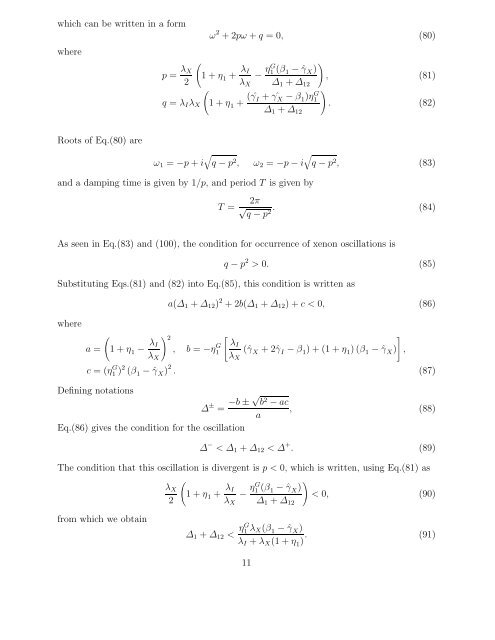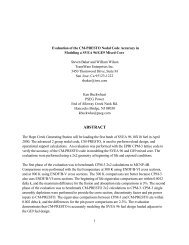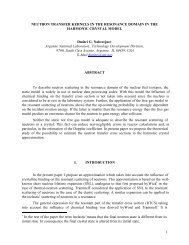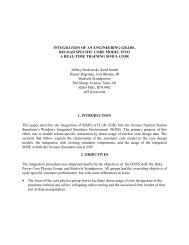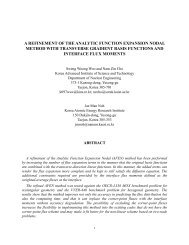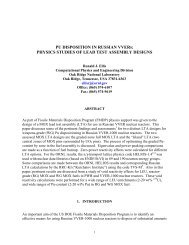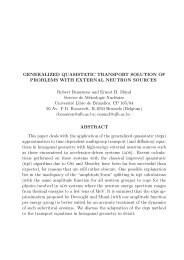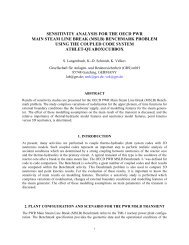K. Kobayashi and S. Tsumura
K. Kobayashi and S. Tsumura
K. Kobayashi and S. Tsumura
You also want an ePaper? Increase the reach of your titles
YUMPU automatically turns print PDFs into web optimized ePapers that Google loves.
which can be written in a form<br />
where<br />
Roots of Eq.(80) are<br />
p = λX<br />
2<br />
<br />
q = λIλX<br />
ω 2 +2pω + q =0, (80)<br />
1+η 1 + λI<br />
<br />
λX<br />
1+η 1 + (ˆγ I + ˆ<br />
− ηG <br />
1 (β1 − ˆγ X)<br />
, (81)<br />
∆1 + ∆12<br />
γX − β1)ηG <br />
1<br />
. (82)<br />
∆1 + ∆12<br />
<br />
ω1 = −p + i q − p2 <br />
, ω2 = −p − i q − p2 , (83)<br />
<strong>and</strong> a damping time is given by 1/p, <strong>and</strong> period T is given by<br />
T =<br />
2π<br />
√ . (84)<br />
q − p2 As seen in Eq.(83) <strong>and</strong> (100), the condition for occurrence of xenon oscillations is<br />
q − p 2 > 0. (85)<br />
Substituting Eqs.(81) <strong>and</strong> (82) into Eq.(85), this condition is written as<br />
where<br />
<br />
a = 1+η1 − λI<br />
λX<br />
a(∆1 + ∆12) 2 +2b(∆1 + ∆12)+c


